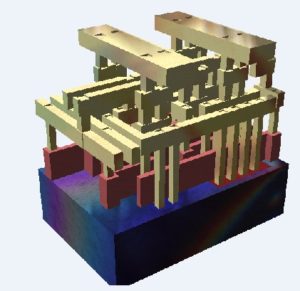
A team of researchers from the University of Exeter in the UK has developed an innovative, cutting-edge technology that can be used to produce a 3-D microchip for faster, future computing.
According to researchers, the new technique would be cheaper than the existing techniques and could revolutionize the next generation of computers by offering more efficiency and greater speed. The new technology would help produce optoelectronic materials (devices that produce, detect and control light) that are important for the next generation of renewable energy, security and defense technologies.
“This breakthrough will hopefully lead to a revolution in the development of vital new materials for computer electronics,” said Anna Baldycheva, from Exeters Centre for Graphene Science.
“The work provides a solid platform for the development of novel next-generation optoelectronic devices. Additionally, the materials and methods used are extremely promising for a wide range of further potential applications beyond the current devices,” Baldycheva said.
In this study, researchers used microfluidics technology, in which a series of minuscule channels are used to control the direction and flow of tiny amounts of fluid. The fluid used contained graphene oxide flakes that were mixed together in the channels to make the chips. The team also used a new light-based system to assemble the three-dimensional chip structures.
According to the team, the new technique will provide a blueprint for others to make the chips.
“We are very excited about the potential of this breakthrough and look forward to seeing where it can take the optoelectronics industry in the future,” Monica Craciun, Associate Professor of Nanoscience at Exeter added.
The detailed findings of the study have been published in the journal Scientific Reports.
